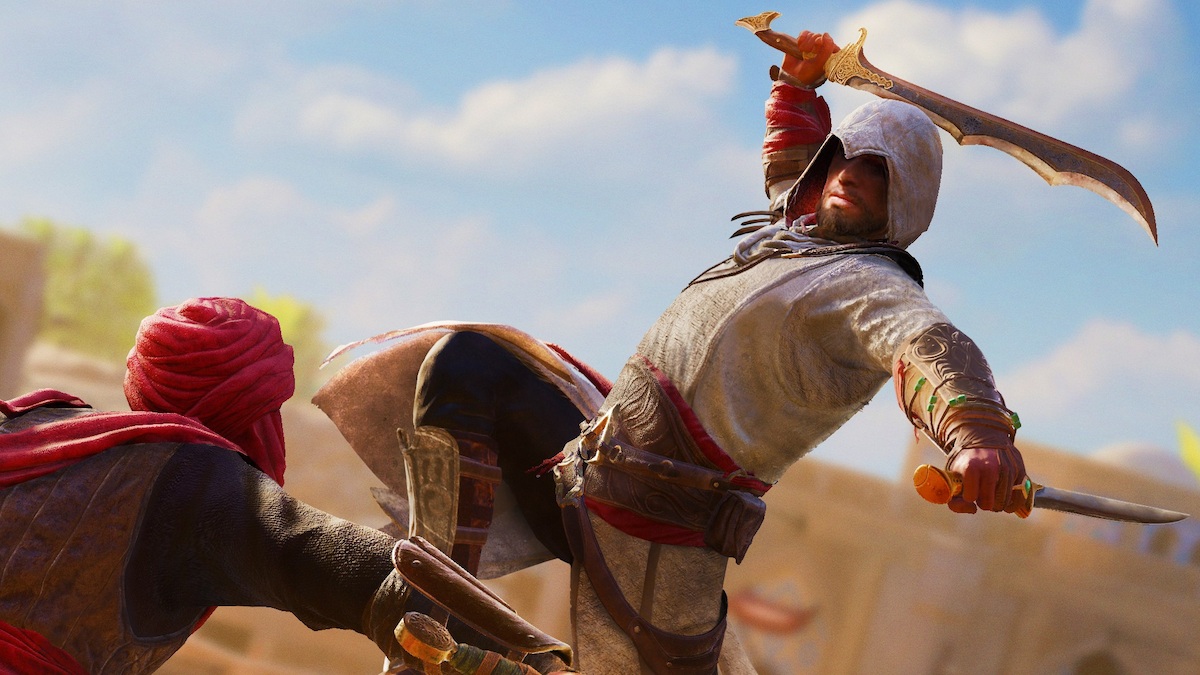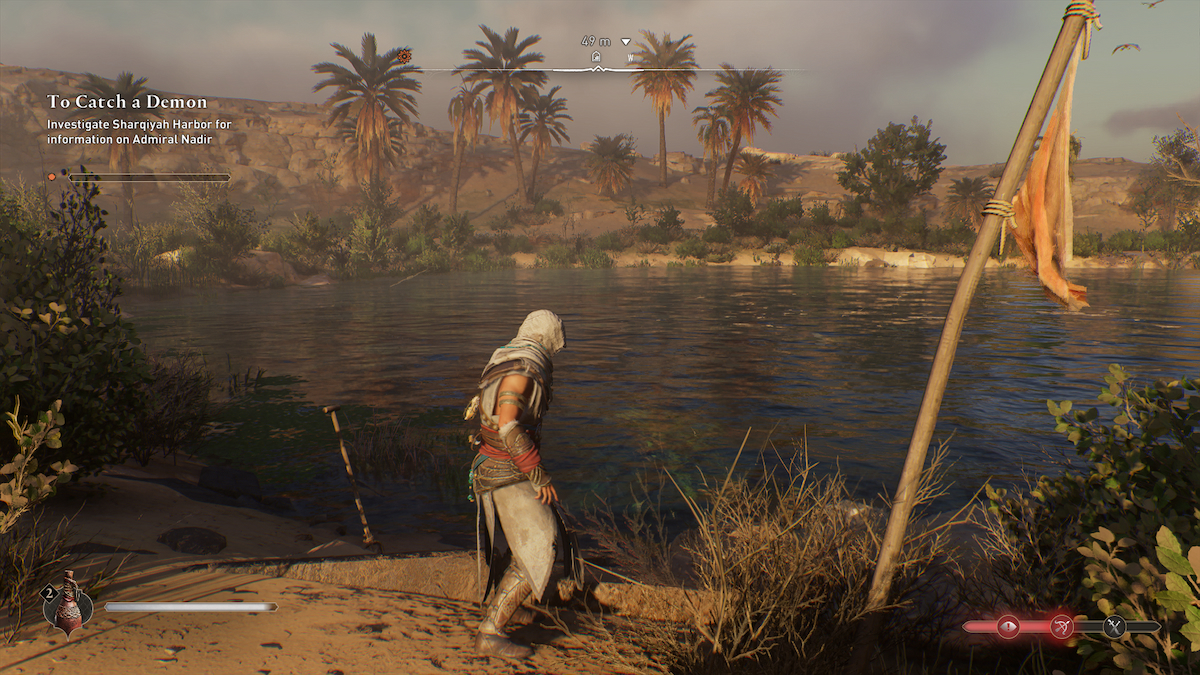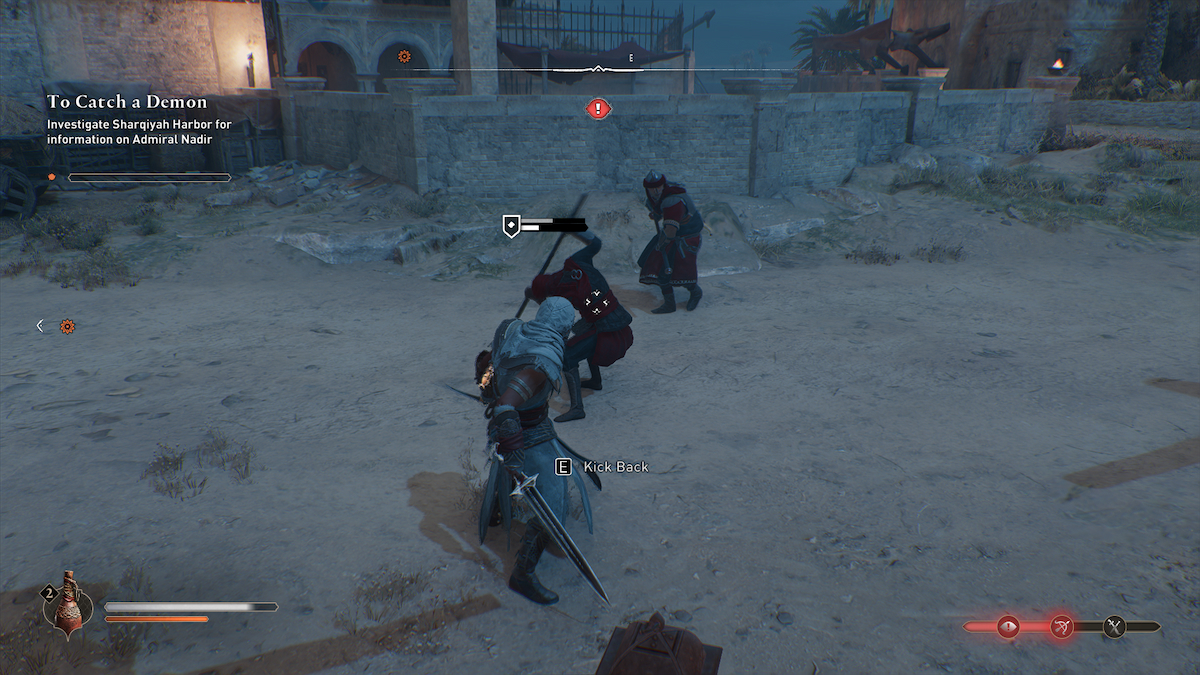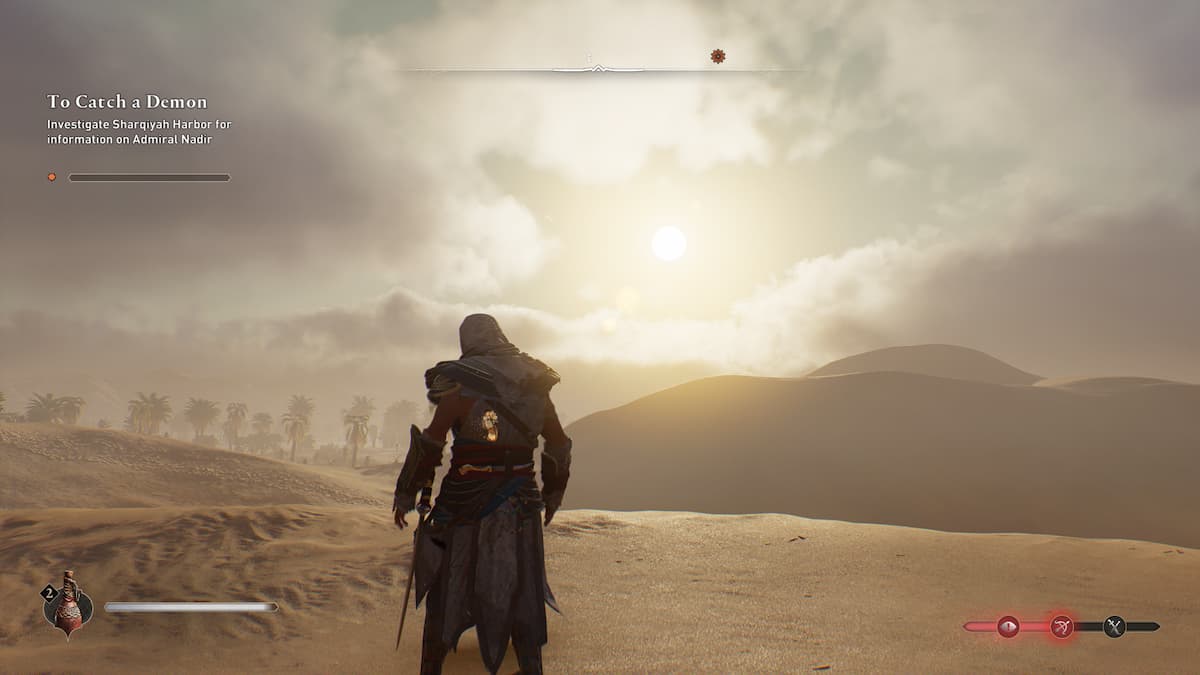For years, fans such as myself have been begging on our hands and knees to take the Assassin’s Creed franchise back to what made it great. Sure, The Witcher 3 style of RPG mechanics was cool for Assassin’s Creed: Odyssey. And, sure, the Viking setting for Assassin’s Creed: Valhalla was an interesting place to take the series. But nothing filled the void of the first few games. Since the series has gone through some drastic changes — and with even more to come — it’s more or less a breath of fresh air for the series to go back to the classics. With Assassin’s Creed: Mirage launching tomorrow, this review should either get you excited or just help make your potential purchase easier to decide. So, let’s get to it, my fellow Hidden Ones!
If it’s not broken, don’t fix it
The story of Assassin’s Creed: Mirage is a safe one. It follows the template of other Assassin’s Creed games such as the main character’s motives, personal battles, and how their story impacts the Order. In any Assassin’s Creed game, the main character is usually thrust into the conflict between Templars and Assassins without having any say. Plus, their personal issues are intertwined with the overarching narrative. Basim in Assassin’s Creed: Mirage follows suit with this. While his motives and reasoning are not as strong as the others who’ve come before, he does fit into the robe and role quite well.
One important aspect Ubisoft has learned is to get players into the action quickly. In Assassin’s Creed: Mirage with a limited amount of time to write this review, I was able to start Basim’s assassin story an hour in. In contrast, it took me three hours to start Connor’s story in Assassin’s Creed 3. This pulled me into the world quicker, and in turn, I was and still am engaged with how his journey is fleshed out. However, if you’re looking for the game to break the mold, you won’t find that here. Ubisoft has figured out what works in how to tell these stories. I can’t imagine the studio changing that any time soon.
Familiar places with new faces
The main complaint from Assassin’s Creed: Odyssey to Valhalla was how massive the world was — and how over-bloated it got with random missions and whatnot. For Assassin’s Creed: Mirage, it’s a much more focused and closed-in experience. While Baghdad isn’t as massive as Greece, it’s much more detailed. When you’re sitting on a bench or sneaking with a group of people, you can tell how intricate the world is despite its smaller size. I remember it would take so long to get around in Assassin’s Creed: Valhalla, which forced me to fast-travel a lot (I hate fast-traveling), and it became an issue mid-game. In Mirage, getting across town couldn’t be any easier. While you can use mounts, I prefer to stay in the air and jump from rooftop to rooftop. Since the map is smaller, getting around wasn’t a chore much like the first few games in the series.
You may be thinking that a smaller world means fewer or no diverse locations. While, yes, the setting of Assassin’s Creed: Mirage is boiled down to a single city, the biomes are rich and help bring Baghdad to life. You have your city centers that have sprawling rooftops with large crowds. Then, on the other side, there are these massive deserts that seem to go on forever. Plus, any area near water makes it look like a world on its own. So, explore everything you see since it’s now easier to do.
Going back to basics
As a fan of the series (I am trying my hardest to keep my bias out), I enjoyed the stealth and the more intimate experience of the older Assassin’s Creed games. There’s much influence from the first two or three entries in Assassin’s Creed: Mirage. You have the social stealth that was first introduced in the first game, plus you have the notoriety system Assassin’s Creed 2 brought in. When mixed in with how Assassin’s Creed: Mirage presents itself, it becomes the definitive experience for not just fans, but for anyone who wants to jump into the world.
While those mechanics are brought back, they’re also made better. For example, if you get your notoriety even to the first notch, the whole of Baghdad will turn on you. NPCs will start to point you out from the crowd, and your social stealth options become limited. However, you can tear down posters and use tokens to bring down your notoriety. This is just a great way to show how much your actions impact not just you, but the world itself.
Who’s the new guy?
This section will contain brief spoilers for Assassin’s Creed Valhalla: If you played Assassin’s Creed: Valhalla, you can probably remember who Basim is. For readers who aren’t familiar with the story, Basim was first introduced in Valhalla while helping Eivor out in England. His obsession with the race that came before, the Isu, drove him to do questionable things in Valhalla, like going to the future. Now as the main character of Assassin’s Creed: Mirage, we get to see his roots and why he joined the Order.
At the time of writing this review, I have a hard time pinpointing his deal. Basim’s personality is somewhat all over the place. There’s a mix of Ezio and Arno’s charm, but at the same time, he’s got the blandness of Altair. This is an aspect of the game where I feel everyone will have a different opinion. But for me, I didn’t enjoy how he interacted with other characters and dealt with his problems. He seemed one-dimensional in comparison to Eivor from Valhalla. But as mentioned, his charm did save the day more often than not. It’s just interesting to see where he’s from and who he becomes by the end of the Viking adventure in Assassin’s Creed: Valhalla.
Fight like an assassin
The combat in the games has changed over time. From the first few games, it became mostly about parrying, then fighting became more aggressive by giving you more tools. In Assassin’s Creed: Mirage, things aren’t as overwhelming as Valhalla or Odyssey in terms of your arsenal. You get a sword and dagger, plus other tools like throwing knives. While limited, the combat does not suffer one bit. This is something Ubisoft has put a lot of time into, much like the previous games.
Gone are the days of you walking into a stronghold where you can act as an army of one. Which is a very un-Assassin’s Creed thing to do. Now, all this is replaced with being more surgical, not getting into fights as much, and using your resources. While you can fight off enemies as a last option, your tools will help you escape and survive. The style of combat is borrowed from Assassin’s Creed 1 with the fluidity of the more recent games. So, while Basim can fight with more versatility, he’s best at staying in the shadows and striking at the right moment.
Don’t break a leg
Ubisoft has made the movement more fluid in titles from Assassin’s Creed: Unity to Valhalla. Getting around those worlds was fun because of how realistic the freerunning got. Going from point A to point B was effortlessly done. In Assassin’s Creed: Mirage, this is somewhat of a step backward. I get that the game is trying to go back to what made it great. However, players are used to the seamless traversal the more recent Assassin’s Creed titles had. Basim’s movement is rather clunky, much like the first couple of games. When I’m trying to get on a wall behind me, for some reason, Basim jumps upwards. A lot of my deaths in the game came from misguided jumps I didn’t intend for him to do. This may be an irritating issue for some players.
On the other side, not everything is bad movement-wise. Once you get things going, the freerunning looks and feels connected. During those high-energy chases when you’re able to navigate a path, you can properly freerun without hitting walls or misstepping. But with the same breath, I just wish the fluid movement continued on to Assassin’s Creed: Mirage because it looks amazing in the older games.
Leave your mark
First introduced in Assassin’s Creed 2, customizing has been important. The mechanic has grown so much over time. For the latest entry, the option is still there, but not as deep as the last few games. There are still skills that you can buy via skill points. You can also come across new gear such as outfits, dyes, talismans, and different weapons. The RPG-lite mechanics don’t force you to grind to earn new things. Because there’s no leveling system, skill points are earned by helping people or doing missions. Now, you don’t have to do a bunch of side missions to level up to beat a boss — just make sure you have the right tools.
This is an aspect that has been boiled down and streamlined. The outfits you get aren’t just to look deadly, they have stats and can be upgraded at Tailors to get even better perks. The same is done for weapons, but you go to a Blacksmith to upgrade. You can find any playstyle you want even in the smaller scope of options you have. That alone will make it feel like things are bigger than they are.
Taking a leap of faith in the right direction
It looks like Ubisoft has been listening by giving the player base exactly what they want. Bringing back social stealth, making gameplay about sneaking around, and offering a more honed-in experience. These are the things that made many Assassin’s Creed games so likable. And while the series has gone through many facelifts, the games have strayed from what the core Assassin’s Creed mechanics are. Thankfully, it looks like Assassin’s Creed: Mirage wants to pivot back to those pillars by focusing on stealth, movement, and combat much like the first game did over 15 years ago. Time certainly does fly.
Other Assassin’s Creed: Mirage articles
Assassin’s Creed: Mirage is available now via the Ubisoft Store.












Published: Oct 4, 2023 07:01 am